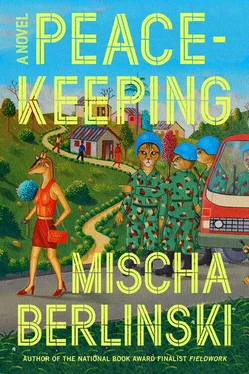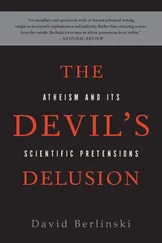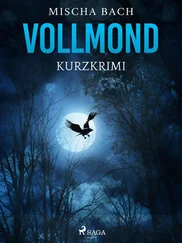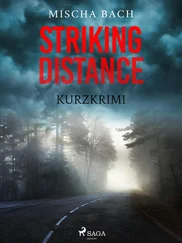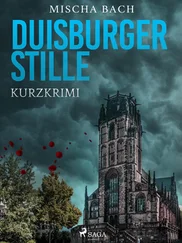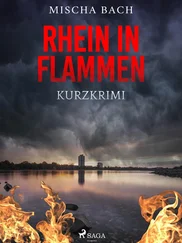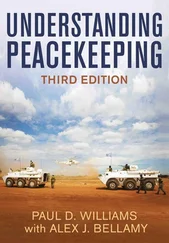* * *
At the hotel, Terry and Nadia get the judge dressed and walking. Maybe around the second pot of coffee he’s roaring like a lion. He’s sloughing off the doubts like old skin. He had the idea in the shower, comes bursting out of the bathroom wearing nothing but a towel.
“I don’t need to see that, brother,” Terry says.
“What do you think—”
“I think you should get that thing covered.”
“We’re going to walk to the CEH.”
CEH headquarters is still being held by the loose coalitions of thugs, students, and paid protesters, maybe a hundred young men holed up in there. Every hour, every day a few are drifting out the back stairs.
What the judge is proposing is a march from the Presidential Palace right to CEH headquarters, carrying boxes of food and supplies for the Democracy Warriors (the phrase came to the judge in the shower) holed up inside. Then the judge will give a speech, right out the window of the CEH, to a crowd of demonstrators assembled in the street below.
He’s on the phone, and by early afternoon there are two thousand men and women ready to march. This is the last of their money, on the street. There are drums and a pickup truck packed with loudspeakers. And walking slowly, at the head of the march, is the judge, microphone in hand.
It doesn’t matter what Johel says, because no one can hear him over the roar of the crowd.
The press is there, both the Haitian press and the international press: at the start of the riots, there were a handful of foreign reporters; now there are more than a dozen, mainly photographers, some print, couple of camera crews. It’s nice to shoot Haiti in a crisis — just four hours from New York, two from Miami. Especially in cold weather up north it’s a good gig: you can shoot civil unrest in the day and drink rum sours at night poolside at the Hotel Oloffson. Rumor has it that the correspondent for CNN has a Haitian lover — he’s been down since day two of the crisis, doing stand-ups in front of the Presidential Palace, wearing a bulletproof vest and helmet.
Nobody wants a peaceful protest. The journalists can’t sell pictures of a peaceful protest, and if the journalists can’t sell pictures, what is the point of protesting? The Nigerian riot police backed by Brazilian soldiers don’t want peace: If there is peace, what are they there for? The kids in the crowd have been paid to throw rocks. The PNH have been paid to fire back tear gas.
The procession turns onto the rue des Miracles, and the PNH fire a barrage of tear gas, the projectiles rising and falling the distance of a city block in long, parabolic arcs, beautiful and deadly, then releasing on contact with the ground thick clouds of silver-gray poison.
Tear gas is an insidious weapon because it preys on two of the body’s most powerful defensive instincts. The first is to hyperventilate when panicked, and the second is to move quickly away from danger. Moving quickly causes one to breathe still more deeply, and in this way inhale still more of the gas. Lungs register the gas most immediately and provoke the first sensation of panic, but it is the exposed skin of the face and hands that causes the most intense pain, like dipping your face into boiling water, every bit as terrifying as the initial realization that the air you are breathing has been poisoned.
The photographers dart forward into the gas, many of them prepared for just this eventuality with gas masks of their own.
Johel felt the tear gas and began to die. The world tilted and swirled. The pain took him to a place beyond thought: he felt his skin slough off his bones, his heart explode, his lungs shred into a thousand jagged edges. Pain traveled from his eyes to his brain on nerves he had never before known existed. He could not move, he could not breathe. His great bulk settled on his knees.
Then the world went black.
Those watching Johel saw him collapse, then rise again. But Johel was gone. The riot police of the PNH firing tear gas projectiles and the protesters alike knew that Ogoun the warrior was in their midst. Ogoun rose to his feet, now taller than Johel had ever stood. He surveyed the scene with the cool of a veteran to whom battle is the natural condition of man. Ogoun felt the pain but felt no pain, knowing that to a soldier pain is only a distraction. At his feet a projectile canister leaked its deadly gas. Ogoun picked up the hot metal tube and considered it, then tossed it imperiously aside. “Grains mwem fret!” he cried. My balls are cold! This was his way of announcing that the battle had been well and truly joined.
And because courage is infectious, it takes only one such person to render an entire crowd, which would otherwise have been thoroughly dominated by tear gas, immune to the effects of the drug. Seeing Ogoun move in slow time away from the riot police, the crowd marched again.
Johel would later remember none of this.
Senator Charles Oxblood, Democrat of Florida, chairman of the Senate Appropriations Committee Subcommittee on Foreign Aid, keeps a papier-mâché lion’s head on the wall of his office. He acquired it on his honeymoon in Haiti, thirty years back. Those two weeks made Haiti an area of sentimental interest to him — but no senator from Florida could afford to ignore Haiti, any more than a senator from Florida could ignore Cuba. What did they say in the cloakroom? “Our esteemed friend from the Caribbean.” Let them laugh. He is the most powerful man in Haiti, although, of course, he is not in Haiti.
The senator likes to say, when it comes to Haiti, that he’s done what he can. At town hall meetings with constituents, questions about Haiti come up (and they do come up, this being Florida) and the senator ticks off his accomplishments on his fingers. The USAID budget comes out of his committee, and he makes sure that Haiti has not been overlooked. The senator was instrumental in passing favorable trade tariffs for Haiti. The United States pays a hefty chunk of the cost of the Mission, and there are members who’d see that budget whacked, but few are eager to wrangle with Senator Oxblood over the matter. State is forever trying to slip out of the Oxblood rule, the complicated series of vetting regulations that the senator has enshrined in American law to ensure that taxpayer dollars don’t fund drug traffickers or human rights abusers, but the senator does his best to rein State in. His committee holds regular hearings on Haitian affairs, and when he can, he schedules a fact-finding trip down there.
Still, when Senator Oxblood considers the work his subcommittee has done on Haiti over the years, if the conversation is private and his mood is mellow, he’ll tell you that it doesn’t seem to have done much good. He wonders if they’ve been on the right track at all. Haiti has broken the senator’s heart a dozen times over the years. Every year that country seems to get poorer, every year it seems like there’s some kind of damn riot in the streets — who can keep track of it all anymore? The senator sometimes felt that when it came to that country, twenty years of hard work had just been turning around in a circle.
Destiny comes for the judge and Senator Oxblood on the front page of the print edition of The New York Times. Senator Oxblood still reads the Times in print, being a man of a certain age. Nobody had planned for this, could have planned this. Destiny is on assignment in Haiti, shooting a story on deforestation for National Geographic , trapped in the Hotel Oloffson by the riots. Destiny is bored and gets a day rate from the Times to shoot the disorder. Destiny’s photo is one of those miracles of composition and storytelling, a photo so compelling that the editors at the Times agree there is no place for it but above the fold, A-1. Destiny is a photograph of a little boy carrying an honest-to-god white dove, the boy cowering in fear as three policemen with gas masks come at him with batons. Over the boy’s shoulder is the huge banner the protesters have hung on the looted building: DEMOCRACY IN HAITI NOW.
Читать дальше
